How to properly grow fruitful Siberian Bonus pepper with bright and incredibly tasty fruits
Pepper Siberian bonus was bred by breeders from Siberia S. Ugarova and V. Dederko. The variety grows well and bears fruit in all regions of the Russian Federation. Due to its taste and original appearance, the vegetable has become an honored guest in many vegetable gardens. In this article, we will consider the features of pepper, its advantages and the growing process.
The content of the article
What kind of pepper is this
The Siberian bonus forms large fruits with thick walls and bright color. The culture is grown in open ground and under a film cover. In 2012, the variety was included in the State Register of the Russian Federation.
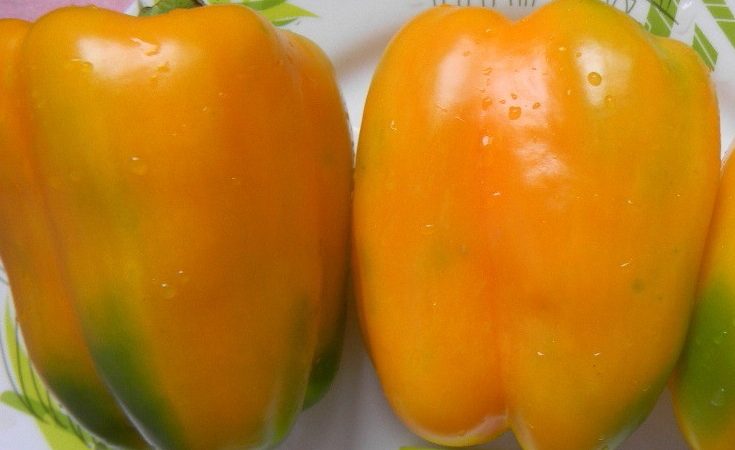
Feature and Description
Pepper belongs to medium-sized and mid-season varieties. The growing season is 170–180 days. Sprawling bushes reach a height of 80 cm, have a closed shape, hide up to 15 large fruits. Leaves are medium in size, green in color, slightly wrinkled.
Distinctive features
The Siberian bonus is easy to recognize by its low bush and bright orange fruits. Gardeners compare the culture to northern dwarf oranges. Vegetables do not contain capsaicin, but retain their peppery flavor. The pulp is tender and sweet. The fruits reach the stage of biological ripening without losing their elasticity and characteristic crunch.
Characteristics of fruits, yield
The shape of the fruit is cubic... The weight of each is up to 300 g, the wall thickness is up to 10 mm, 3-4 chambers are formed inside. At the stage of technical ripeness, the shade of the vegetables matches the color of the foliage. When biologically ripe, the peppers turn bright orange.
The yield indicators of the variety depend on the place of its cultivation: in the open field, 3-4 kg of fruits are collected from 1 bush, and in the greenhouse - 6-7 kg.
Preparation for growing
The first step in cultivation - seed preparation - includes several stages:
- Rejection of planting material. Dissolve 30-40 g of sodium chloride in 1 liter of water. The seeds are dipped into the solution for 5-7 minutes. Hollow specimens will float on the surface, they are removed. The grains that have sunk to the bottom are dried well on a paper towel.
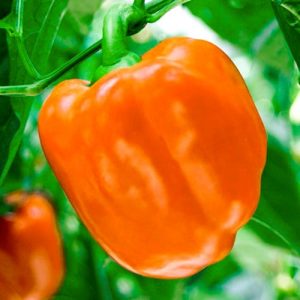
- Sorting and pickling... Seeds are sorted by size: large to large, medium to medium, small to small (this is how more uniform shoots are obtained). To pickle the planting material, 1-2 drops of potassium permanganate are added to a glass of water, the seeds are lowered there for 10-15 minutes. Then they are washed under running water and dried.
- Processing with macronutrients. This is done 2-3 days before sowing for seedlings. The grains are placed in a gauze napkin, which is immersed in a nitrophoska solution for 20-30 minutes (1 tsp of the preparation per 1 liter of water). After the procedure, the seeds are not washed.
Attention! Chemical preparations accelerate the process of seed germination. Growth stimulants are used - "Azotofit", "Ideal" or sodium humate. These drugs have a positive effect on the speed and quality of the Siberian bonus development.
The next step is soil preparation. They purchase a ready-made soil mixture or make it themselves from:
- humus and sod land (2: 1);
- humus and peat (1: 1);
- humus and sod substrate (3: 2).
Chalk (1-2 tablespoons per 10 liters of soil) or dolomite flour (3 tablespoons per 10 liters) is added to the selected substrate.
Important! When using land from the site, it is additionally scalded with boiling water or ignited in the oven. Land from the garden is a home for pest larvae and spores of dangerous diseases of fungi.
The last step is choosing a container and a place for growing seedlings. Wooden boxes or peat pots are used as temporary containers. Place containers on the windowsill on the south side. The air temperature should be from +26 to +28 ° С for the culture to have enough sunlight.
Growing seedlings
Growing Siberian bonus seedlings and their subsequent care do not differ from the cultivation of other varieties of sweet pepper.
Planting pepper
For cultivation with a pick, sowing seedlings is performed 60-70 days before transplanting into open ground... In Siberia, this time falls on the end of March or early April, and in warm regions - at the end of February. The planting material is deepened into the soil by 2-3 mm, carefully moistened from the sprayer.
For growing without picking, seeds are planted in early March (for southern regions) or at the end of April (for northern regions). 2 seeds are dipped into each container, covered with a layer of earth (1 cm) on top. Full germination will be observed in only one seed, weak shoots are removed.
Further care
When cultivating with a pick, in addition to maintaining a suitable temperature (+ 26 ... + 28 ° С), other recommendations are also taken into account:
- Pick time - do this after the formation of the first 2 leaves. Moisten the soil abundantly, carefully place each pepper in its container. The first 7 days after transplanting, the plants are shaded to protect them from direct sunlight.
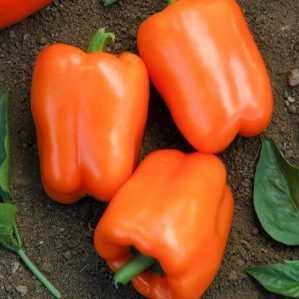
- Watering after picking - for the first time produced 6 days after transplantation. Use settled and filtered water. Moisten the culture in the morning: so the top layer of the earth will have time to ventilate well.
- Frequency of dressings - fertilize the plants 2 weeks after the pick. A mixture of sodium humate and any complex fertilizer for vegetable crops is used. Re-feeding is applied 10 days after the first.
Attention! If the leaves of the bushes have turned pale and the stems have become thin, then add urea in the form of nitrogen fertilization. Peppers are poured over or sprayed. Dilute urea in water strictly according to the instructions to avoid burns of plant tissues.
When growing without picking, pay attention to the following points:
- in the first 7–12 days after sowing, the container is covered with polyethylene and removed to a warm place;
- after the appearance of sprouts, containers are transferred to the lightest corner of the room;
- polyethylene is opened after 2 days, and after a few days it is removed
- do not forget about additional lighting: ordinary lamps or phytolamps will turn small sprouts into strong seedlings;
- after the appearance of 4 true leaves, the plants are transferred into more spacious pots (approximate dimensions - 10x10x15 cm). They do it like this: gently knock on the containers, remove the pepper along with the earthen lump and transfer it to another container, then spray the bushes with honey water;
- the first 2 weeks after transshipment, the pepper is watered only with clean water, do not allow its stagnation;
- 3 weeks after the move, the culture is fed with liquid organic fertilizers and ash tinctures - the procedure is repeated once every 2 weeks.
Important! The pots of peppers are turned towards the light from different sides so that the leaves develop better and the stems do not tilt to one side.
Features of cultivation and possible difficulties
The Siberian bonus is planted in open ground in late May or early June, when the spring frosts have passed. The variety does not tolerate excessive thickening of the plantings, therefore, 4-5 plants are planted per 1 m2. Subsequent care consists in regular watering, hilling, loosening, top dressing.
There are no serious difficulties in the cultivation of pepper. It is important to remember about the timely formation of the bushes (the variety likes to grow strongly). Plants are tied to supports, side shoots are removed. With the density of plantings, fungal infections and various pests will replace the rich harvest.
Typical diseases and pests
Proper care of pepper does not lead to the occurrence of diseases and pests.But sometimes the Siberian bonus is still affected by white, gray rot, Alternaria and a black leg. To fight infections, the bushes are treated with Bordeaux liquid, copper oxychloride or "Cuproxat". Severely affected bushes are removed.
Culture pests:
- aphid, whiteflies, scoops and slugs - fungicides are used against them (diluted according to the instructions);
- bear - larvae and adults destroy the root system of the pepper. Get rid of them with homemade carrot or beetroot cored traps or fungicides. To prevent the appearance of the pest, the plants are fenced with cut plastic bottles, 10-20 cm deep into the soil.
Reference! A solution of wood ash is an effective folk remedy against diseases and pests. The bushes are sprayed with this composition 2-3 times for the entire growing season.
Advantages and disadvantages of the variety
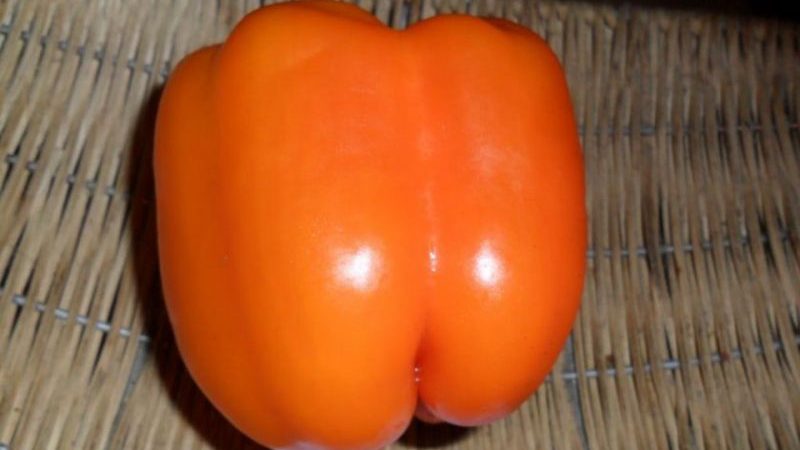
Advantages of the Siberian bonus:
- high yield (5–7 kg of fruit can be harvested from 1 m2);
- characteristic peppery aroma;
- juicy and fleshy pulp without bitterness;
- the ability to ripen outside the bush without losing the elasticity of the fruit;
- unpretentious care;
- the possibility of growing in any climatic region.
The variety has no serious flaws.
Reviews
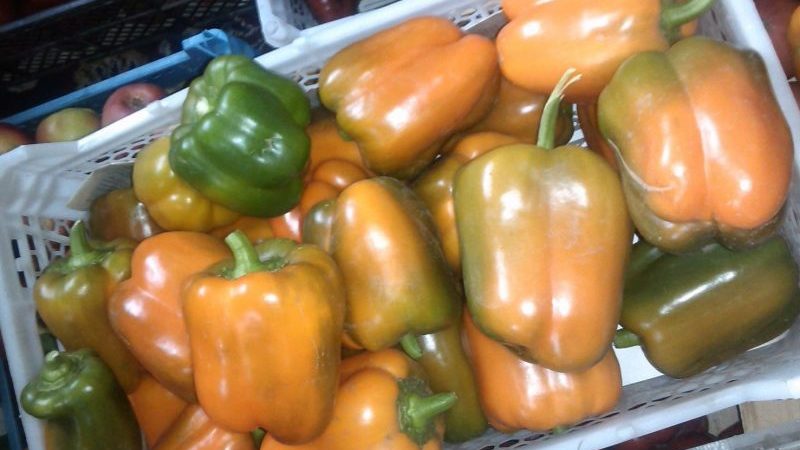
Farmers speak positively about Siberian bonus pepper. They celebrate bright, tasty fruits and excellent yields:
Elya, Oktyabrsky: «I planted Siberian bonus peppers for the first time. A friend gave me the seeds. Despite the rainy summer, the bushes have set a decent amount of weighty fruits, bright orange, just like in the photo. "
Svetlana, Moscow: “I grew a Siberian bonus under a film cover. I liked the variety very much. The bushes grew up to 50 cm in height, and at the end of June, thick neat peppers formed. One fruit weighed 230 g. The vegetables were delighted with excellent taste and light peppercorn. "
Read also:
Pickled pepper recipes for the winter without sterilizing cans.
The variety that can become your favorite is the "Volovye ear" pepper.
How to salt bell peppers for the winter whole quickly and tasty.
Conclusion
Pepper Siberian bonus will be a good option for landing in open ground or under a film shelter in many regions of Russia, including Siberia and the Urals. The culture will delight you with a stable and high-quality harvest of juicy fruits. It is important to take into account the sowing time for seedlings, the timing of planting in a permanent place and the peculiarities of caring for the variety.